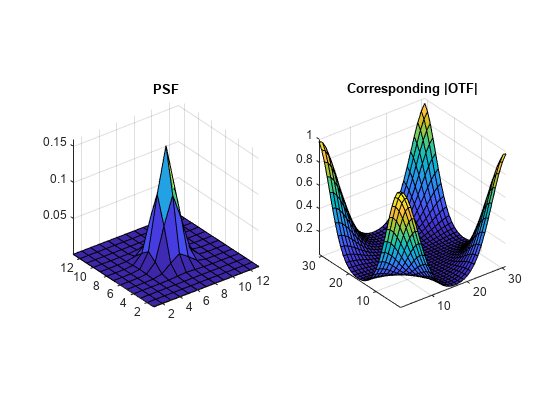psf2otf
Convert point-spread function to optical transfer function
Description
Examples
Input Arguments
Output Arguments
Tips
To ensure that
OTFis not altered because ofPSFoff-centering,psf2otfpostpadsPSF(down or to the right) with0s to match the dimensions specified bysz. Thenpsf2otfcircularly shifts the values ofPSFup (or to the left) until the central pixel reaches the (1,1) position.This function is used in image convolution and deconvolution when the operations involve the FFT.
